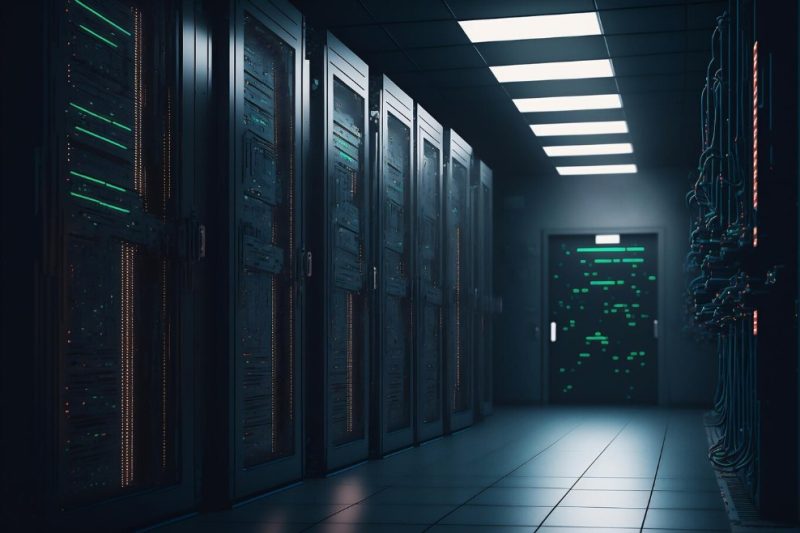
The integration of technology in the design of self storage facilities is revolutionizing the industry. This introductory section explores how cutting-edge technologies are being incorporated into facility design to enhance functionality, efficiency, and user experience. The shift towards tech-enabled storage solutions reflects a response to the evolving demands of modern consumers, who seek convenience and advanced features in their storage choices.
This transformation is not just about aesthetic appeal; it’s about redefining the way storage facilities operate and interact with their users. From automated security systems to digital access controls and energy-efficient designs, technology is playing a crucial role in shaping the future of self storage facilities. This evolution in design philosophy highlights a broader trend of technological integration across various industries, with self storage emerging as a key area of innovation. The following discussion will delve into specific technological advancements and their impact on storage facility design, illustrating the dynamic intersection of technology, architecture, and customer service in the self storage industry.
Role of Smart Technologies
The role of smart technologies in the design of self storage facilities is becoming increasingly significant, offering enhanced capabilities and user experiences. One of the key areas where this is evident is in the management and functionality of temperature controlled storage units. These units utilize advanced systems to maintain optimal conditions, protecting sensitive items from temperature fluctuations and humidity. Smart technology in this context includes automated climate control systems that can adjust settings based on real-time environmental data, ensuring the preservation of stored items.
Beyond climate control, smart technologies are being applied to improve facility access and security. Digital keyless entry systems and mobile app integrations allow for convenient and secure access to storage units. Additionally, IoT (Internet of Things) devices are being used to monitor unit conditions, alerting facility managers to potential issues like unauthorized access or environmental changes.
These advancements showcase how smart technology is not just enhancing the security and preservation aspects of self storage but also elevating the overall customer experience. By integrating these technologies, storage facilities are able to offer more personalized and efficient services, meeting the growing expectations of tech-savvy consumers. The implementation of smart technologies is a step towards more innovative, responsive, and user-friendly storage solutions.
Eco-Friendly Design Innovations
Incorporating eco-friendly design innovations in self storage facilities is becoming increasingly important, aligning with global efforts towards environmental sustainability. These green design elements not only reduce the ecological footprint of storage facilities but also enhance their operational efficiency and appeal to environmentally conscious consumers.
Key eco-friendly innovations in self storage facility design include:
- Solar Energy Panels: Harnessing solar power for electricity needs.
- Rainwater Harvesting Systems: Collecting and utilizing rainwater for maintenance purposes.
- Energy-Efficient Lighting: Using LED lighting to reduce energy consumption.
- Green Building Materials: Choosing sustainable materials for construction and insulation.
- Eco-Friendly Landscaping: Incorporating green spaces and native plants for natural cooling.
These practices are supported by initiatives like the U.S. Green Building Council, which promotes sustainable building practices across industries. By adopting these eco-friendly design elements, self storage facilities not only contribute to environmental conservation but also cater to a market that values sustainability. These design choices can lead to cost savings in the long run through reduced energy bills and maintenance costs, while also establishing a positive brand image.
The integration of green technology and materials in the design and operation of self storage facilities represents a commitment to future-oriented, responsible business practices. As environmental concerns continue to grow, these eco-friendly innovations are set to become standard features in the design of modern self storage facilities.
User Experience and Digital Interfaces
The focus on user experience in the design of self storage facilities is increasingly being influenced by the integration of digital interfaces. This trend reflects a shift towards customer-centric services, where ease of use and interactive experiences are paramount. Digital interfaces in self storage facilities encompass a range of technologies, from intuitive online booking systems to mobile apps that allow customers to manage their storage units remotely. These digital solutions offer users unparalleled convenience, enabling them to access services and information with just a few clicks.
Beyond convenience, these digital interfaces also provide enhanced functionality. Customers can receive real-time updates about their storage units, manage payments, and even remotely control access for added security. The incorporation of these technologies into facility design is transforming the traditional self storage experience into a more engaging and user-friendly process.
Moreover, these digital platforms are being designed with user-friendly interfaces to cater to a broad demographic. They often include features like virtual tours, which allow potential customers to explore the facility online before making a decision. By prioritizing the user experience through advanced digital interfaces, self storage facilities are not only meeting the current demands of the digital age but are also setting a new standard for customer engagement and satisfaction in the industry.
Security Tech in Modern Storage

The integration of advanced security technologies is a critical aspect of modern self storage facility design. As the value of stored items increases and customers demand higher security standards, facilities are turning to cutting-edge technologies to ensure the safety and protection of their clients’ belongings.
Key advancements in security technology for self storage include:
- Biometric Access Controls: Utilizing fingerprints or facial recognition for secure access.
- High-Resolution Surveillance Cameras: Providing detailed monitoring of the facility.
- Motion Detectors and Alarms: Detecting unauthorized access or movement in the facility.
These technologies are supported by guidelines from organizations like the Electronic Security Association, which emphasizes the importance of advanced security systems in protecting properties. Biometric access controls offer a higher level of security compared to traditional locks and keys, as they are unique to each user and difficult to replicate. High-resolution cameras not only deter potential theft but also provide clear evidence in case of security incidents. Motion detectors and alarms add an additional layer of security, alerting facility managers to any unusual activity.
By incorporating these advanced security technologies, self storage facilities can provide their customers with peace of mind, knowing that their possessions are protected by the latest security measures. This commitment to security is not just about safeguarding items; it’s a crucial part of building trust and maintaining a reputation as a safe and reliable storage provider.
Impact on Operational Efficiency
The adoption of technology in self storage facilities greatly enhances operational efficiency, marking a significant shift in how these businesses operate. The integration of a smart app for facility management is a prime example of this technological evolution. Such applications streamline various aspects of the storage facility’s operations, from inventory management to customer service.
With a smart app, facility managers can efficiently oversee unit occupancy, track payments, and manage maintenance schedules, all from a centralized platform. This level of automation reduces the likelihood of human error and frees up staff time for more customer-focused activities. For customers, these apps offer a seamless experience, allowing them to book units, make payments, and even control access to their storage units remotely.
The result is a more streamlined, efficient, and customer-friendly operation. The use of smart apps and other digital tools in self storage facilities represents a modern approach to business management, one that leverages technology to improve service quality, operational efficiency, and overall customer satisfaction. This trend is indicative of a broader move towards digital solutions across various industries, with self storage facilities leading the way in embracing these advancements.
Future of Facility Design
As we look to the future of self storage facility design, it’s clear that technological innovation will continue to play a pivotal role. The integration of smart technologies, eco-friendly features, enhanced user interfaces, and advanced security systems is setting new standards in the industry. These developments not only improve operational efficiency but also significantly enhance the customer experience.

Taylor is a freelance SEO copywriter and blogger. His areas of expertise include technology, pop culture, and marketing.













